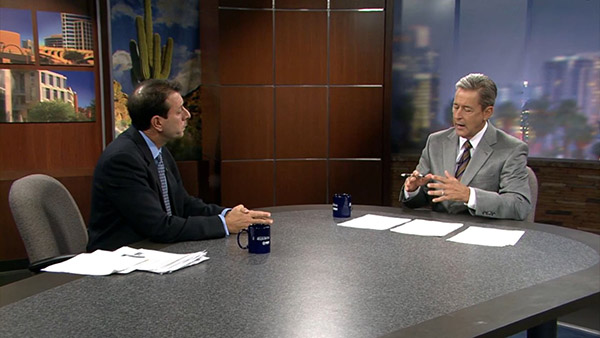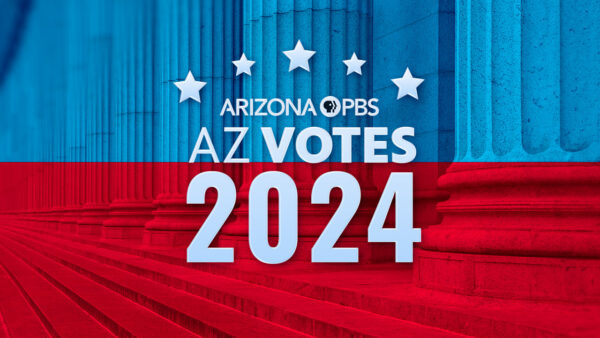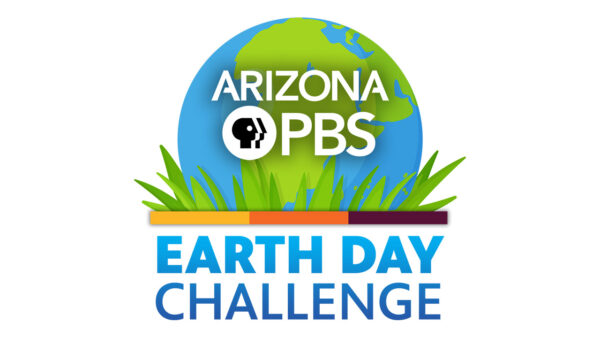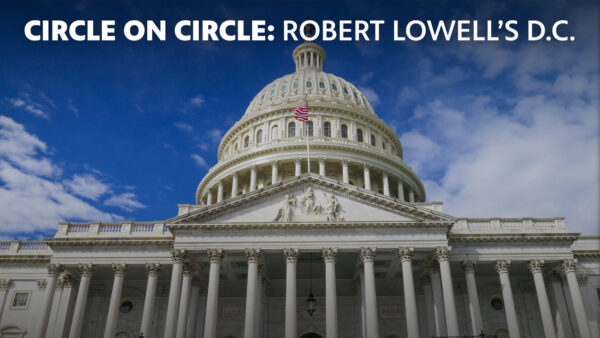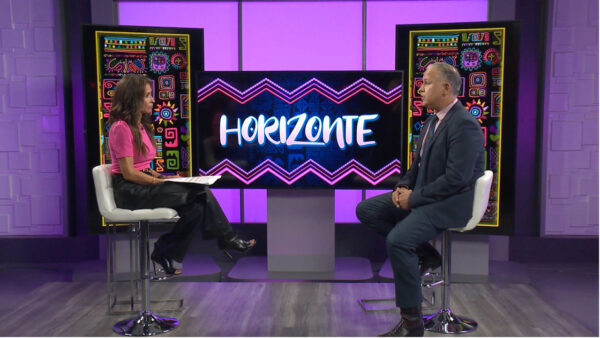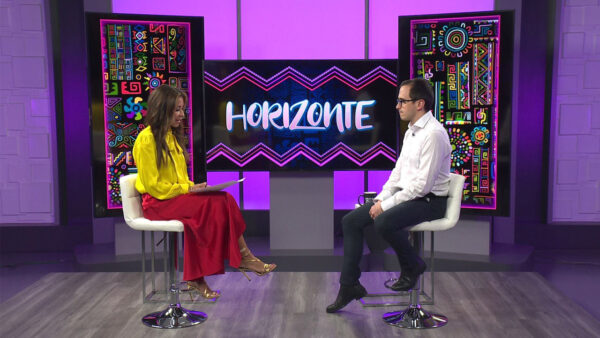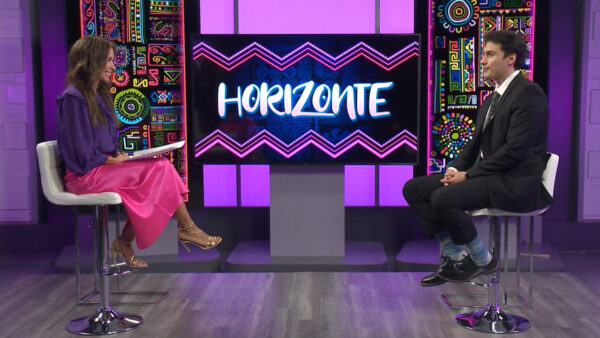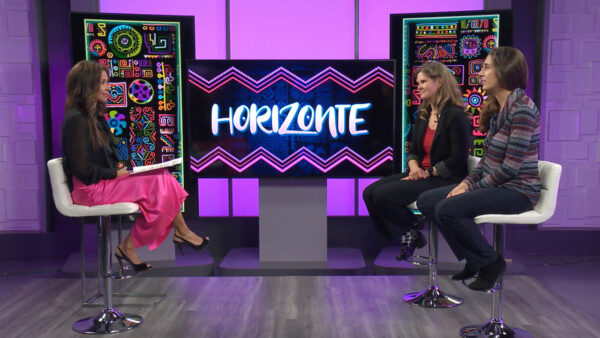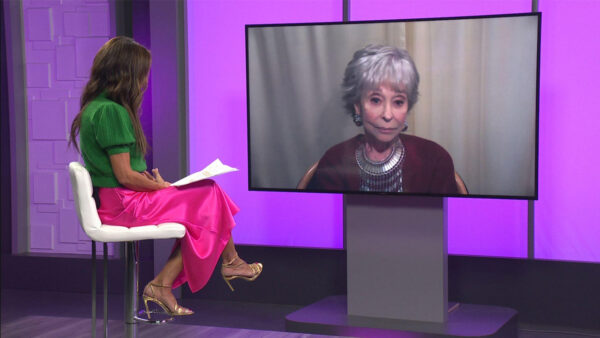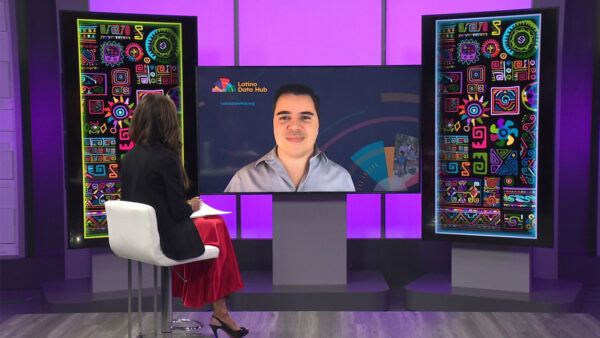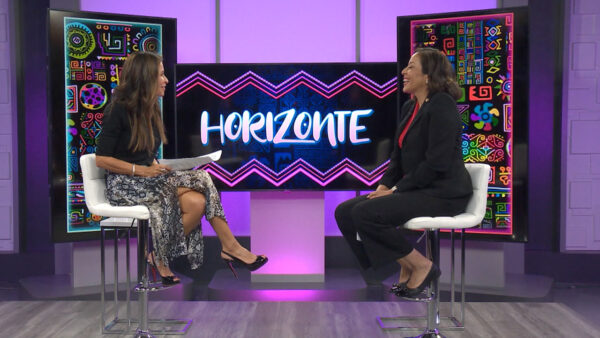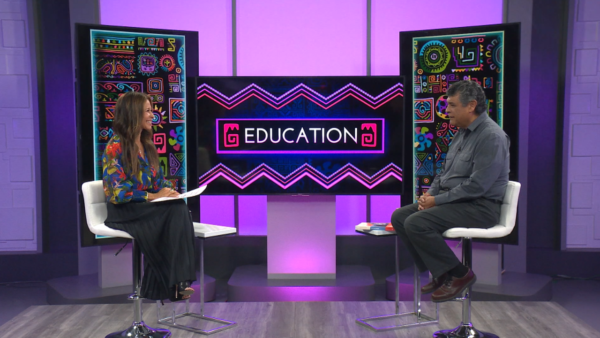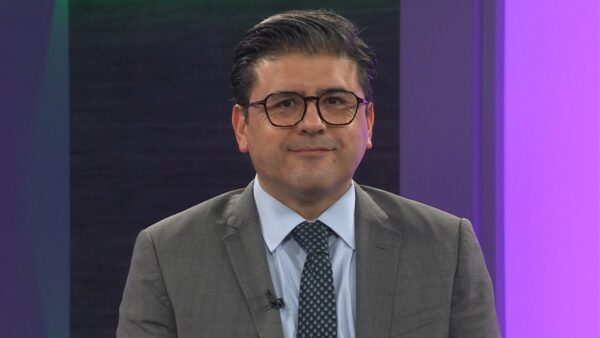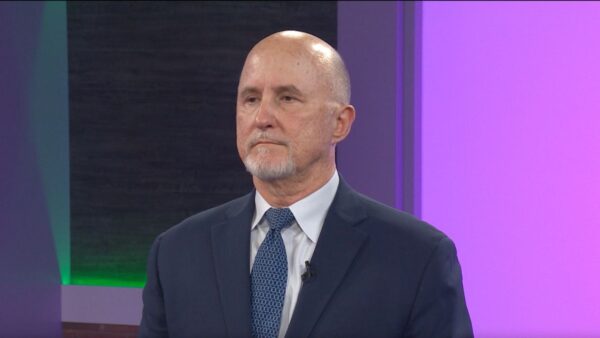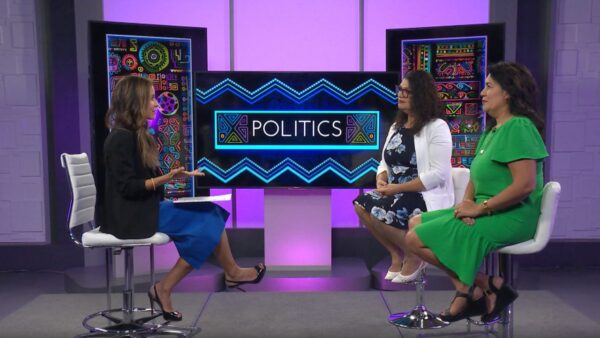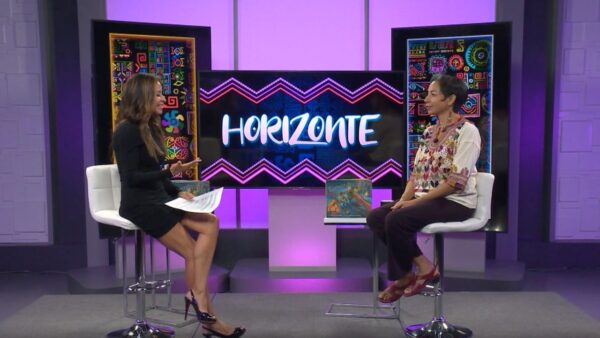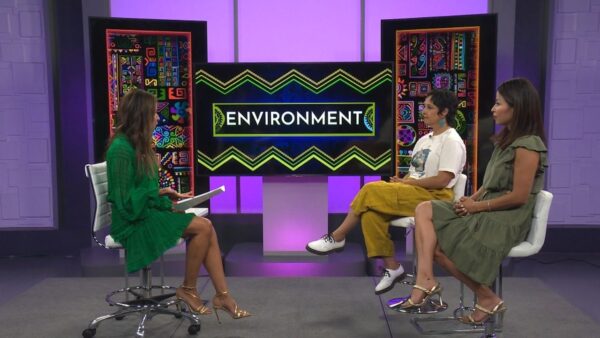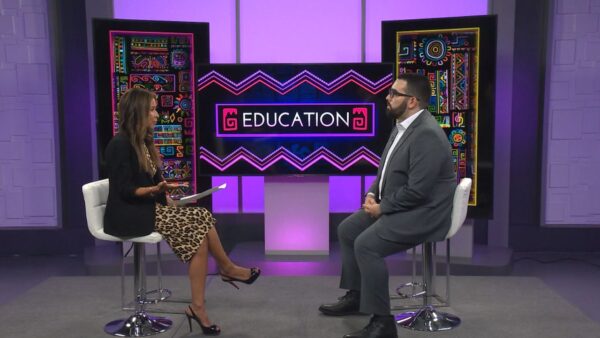“Mexico and Modren Printmaking: A Revolution in the Graphic Arts, 1920-1950” is a display examining the impact modern Mexican Artists and their ontemporaries had on the world of modern art and printmaking. HORIZONTE takes you inside the Phoenix Art Museum to see the exhibit. Find out more.
Visit the Phoenix Art Museum Web site.
>>Jose Cardenas:
Good evening. I'm Jose Cardenas. Thank you for joining us on Horizonte. It's an organization dedicated to providing free legal help to detained immigrants. Hear what the Florence Project is all about. Also, a program allowing students around the world to learn and experience each other's culture. And it was defined as the drive toward modernism in Mexico which helped spark the wave of print making. The work of American, European and Mexican artists on display here in the Valley. This all next on Horizonte.
>>Announcer 1:
Funding for Horizonte is provided by S.R.P.
>>Announcer 2:
S.R.P.'s business is water and power, but our dedication to the community doesn't stop there. S.R.P. - delivering more than power.
>>Jose Cardenas:
Last month the American Civil Liberties Union of Arizona sponsored a community forum called ‘Immigration, a Civil Liberties Perspective.' The goal was to raise awareness about state and federal immigration policies that affect the rights of immigrants in Arizona. One of the groups represented at the forum was the Florence Project. They're a nonprofit organization providing free legal services to women, men, and children detained by Immigration and Customs Enforcement, known as ICE. Joining me to talk about the Florence Project is one of their staff attorneys, Rachael Keast. Thanks for joining us on Horizonte.
>>Rachael Keast:
Thank you.
>>Jose Cardenas:
Let's talk first about the background of the Florence Project. Give us the history.
>>Rachael Keast:
Well, it started in 1989 because an immigration judge in Phoenix by the name of Judge McCarrick, realized that the people before him had no idea what was going on as far as immigration laws were concerned and were pretty much getting railroaded every time. As nice as he was trying to be, people just had no understanding whatsoever of the law and 90 percent of them were unrepresented. Maybe even more at that point in 1989 were unrepresented by counsel. The government doesn't pay for counsel the way the state governments pay for counsel for public defenders in criminal proceedings and in immigration proceedings that just doesn't happen. He was realizing that there's people before me are not even able to exercise the rights that they might have because they don't understand them. Because nobody is there to tell them about them and because they are unrepresented. And he kind of challenged the Private Bar in Phoenix, the way I understand it, and specifically Chris Brelje, one of our founding members, to organize a project to help people get representation, to have free representation available to them while they're in their immigration proceedings. And Chris Brelje took that challenge. He was at Lewis & Rocca, a law firm at that time, and he started the Florence Project and it's been thriving every since.
>>Jose Cardenas:
I imagine it's grown since then.
>> Rachael Keast:
It has grown a lot. It used to be, the way I hear it, a tent out in the middle of the desert. And now we have a real office and staff of 14 and we represent and give pro se assistance and other services to the people who are detained in Florence and Eloy and also to the children, the children who are detained in Phoenix.
>>Jose Cardenas:
When you say pro se what do you mean?
>> Rachael Keast:
Pro se means people who are without representation and that, like I say, is an estimated 90 percent of the people who are in immigration proceedings. When I say immigration proceedings, I mean that ICE is trying to remove people from the United States and they are before an immigration judge who ultimately makes the decision whether they will be removed or not. But 90 percent of those people are pro se, meaning they have no access to legal counsel at all. You know, immigration lawyers can be expensive and people don't always have the resources to hire one. So we are there to kind of pick up the slack, although with 2,400 people detained in Arizona, again 90 percent of those unrepresented, and 14 of us, eight of whom are lawyers, we can't represent everyone, so sometimes we provide what we call pro se assistance, which is kind of an empowering mechanism. So our philosophy being people are capable of representing themselves and presenting their cases to the judge. But they have to have some base understanding of what the law is and what they are entitled to.
>>Jose Cardenas:
Where are most of these people detained?
>> Rachael Keast:
There are 1,500 people approximately on any given day detained at the Eloy Detention Center.
>>Jose Cardenas:
That's the one you work at?
>> Rachael Keast:
I go there every day almost. Four times a week at least and do presentations about legal rights in immigration proceedings to people there. I also do some representation and we do other kinds of pro se assistance, helping people represent themselves because, again, with two attorneys at Eloy and 1,500 people, we can't represent everyone.
>>Jose Cardenas:
The other 900 are in Florence?
>> Rachael Keast:
I believe there are 750, if I'm not mistaken, in Florence, in the Florence Detention Center. There are several detention centers in Florence. One of them is run by the government. There are also some immigration detainees in the county jail there. And then again also the children who are detained in Phoenix and various shelters in Phoenix, we also have a children's team, kid's team we call them, who represent people there.
>>Jose Cardenas:
So a lot of what you do is explain to these people what their rights are and then they represent themselves in the proceedings before the immigration judge?
>> Rachael Keast:
Yeah. I mean, that's all we can do for some people. As much as I speak for myself when I say I would love to see each and every person be represented by counsel. Our philosophy is that sometimes you actually don't need counsel, you are a capable person as we believe most of our clients are, who can represent themselves, but not without understanding the rights. And I shouldn't say exactly that because a lot of people, immigration law is so complex, it's said to be the second-most complex area of law after tax law, and some people just can't represent themselves and I'm hardly able to represent them, as complicated as immigration law is. So while I say some people really can do a great job, representing themselves, and that's our philosophy and it's very empowering for them and it's wonderful. That's our pro se model. I do have to say that a lot of times it's sad what happens and how people get railroaded as far as their rights are concerned when they don't have an attorney present.
>>Jose Cardenas:
What do you mean by railroaded?
>> Rachael Keast:
I guess what I mean is there are a lot of people going through those immigration courts and the immigration judges have to deal with a lot of cases, really rapid fire. And even, you know, on their best day, they, it's not their job to be a person's attorney. So while they can do a general overview of what a person's general rights are in immigration proceedings, they don't have the time or really isn't their job, I suppose, to do a detailed analysis of someone's case and figure out what all the ways they might be able to fight to stay in the United States. All the ways they might not be deportable in the first place, which I think is a lot of people in the proceedings. So that's not necessarily what an immigration judge is going to do, whether it's because they don't want to or because they can't.
>>Jose Cardenas:
As I understand it, the population in Arizona in these detention centers is pretty significant as compared to the rest of the country.
>> Rachael Keast:
Yeah. I understand it's 10 percent of all immigration, ICE detainees, are in the state of Arizona.
>>Jose Cardenas:
They are not all from Arizona.
>> Rachael Keast:
No. I would say the majority are from California. Some from Arizona and then many people from all over the country, from New York, from Maryland, from Florida, from Idaho. I see people from all over the country.
>>Jose Cardenas:
As I also understand it some of these people are actually U.S. citizens.
>> Rachael Keast:
Yeah. I probably speak to one to two U.S. citizens per week just at the Eloy Detention Center.
>>Jose Cardenas:
How does that happen?
>> Rachael Keast:
There are a couple of things. Some people, actually two people In the year that I've been working at the Florence Project, I have met two native born United States citizens who were placed in removable proceedings by ICE, simply because they didn't, one, didn't have a birth certificate, and the other, the government just didn't trust the birth certificate that he did have. Which to me has implications for any single human being in the United States.
>>Jose Cardenas:
How do people in those circumstances even get picked up by ICE? What would be the circumstances?
>> Rachael Keast:
It depends. One fellow was picked up on a routine traffic stop and he actually showed his original United States birth certificate which he carried around with him, because he knew things like this could come up.
>>Jose Cardenas:
Did he speak English?
>> Rachael Keast:
He had spent most of his life in another country in this particular case. I don't want to get too much into details but so I think that was the suspicion. Because his English was not perfect, how can you be born in the United States, I guess, was the theory, if your English is not perfect. But of course it can be.
>>Jose Cardenas:
I understand the discussion you and I had earlier you do have some fluent English speakers who are natives.
>> Rachael Keast:
A huge number of people I talk to. Not native-born citizens. There have only been two of those since I started.
>>Jose Cardenas:
People who are citizens, naturalized citizens.
>> Rachael Keast:
I haven't yet spoken to someone who's a naturalized citizen but a lot of people are United States citizens because they acquired that citizenship through their parents. They might not even know they are United States citizens. They have been going along thinking they are lawful permanent residents or thinking they have no status whatsoever. Little do they know because their mother was born in the United States, even though they were born in another country, they were United States citizens all along. And that actually comes up a lot. And then it's a matter of proving to the immigration judge with tons of evidence because they do require a lot of evidence to terminate removal proceedings even if you are a U.S. citizen, you have to really go the distance to prove it.
>>Jose Cardenas:
You indicated you provided some representation. Most of it's orientation just explaining ICE in big groups. When you provide representation, who pays for that?
>> Rachael Keast:
We have private donations essentially. And also, yeah, private and nonprofit donations.
>>Jose Cardenas:
Taxpayers aren't paying to get --
>> Rachael Keast:
Taxpayers cannot pay for this. That's one of the restrictions on our funding is that no government money can go to pay for direct representation of immigrants and removal proceedings.
>>Jose Cardenas:
Let's talk a little bit about the children. You mentioned we've got a number of them in Arizona. There's a project as I understand, what does that do? It's focused on children.
>> Rachael Keast:
Right. We have three teams at the Florence Project. One is the team at Eloy, the team I am on. One is in Florence at the various detention centers in Florence, Arizona. And the children's team consists of staff attorney and an attorney who also is a fellow and one legal assistant. And they represent, they actually do represent almost every single child who is in removal proceedings in Phoenix.
>>Jose Cardenas:
And how does the process start, especially involving children? Their parents are picked up and they are separated from their parents?
>> Rachael Keast:
It can be that. A lot of children are coming across the border all by themselves. And they wind up in, if the government believes that they are children, they will put them in these detention facilities in Phoenix rather than in the jails, which is where the regular population is.
>>Jose Cardenas:
What typically happens?
>> Rachael Keast:
Then they will go before an immigration judge just like any adult. And the reason we do so much representation is because a dedicated children's team just doesn't, can't fathom the idea of a child, I mean really as young as five years old, they have clients who are five years old, and the government hasn't, won't release them to family members within the United States. That sometimes happens and in many cases it doesn't and then this child is before an immigration judge trying to seek asylum or trying to figure out, navigate. Five years old. Six years old. 10 years old. Trying to figure out how to represent themselves in immigration.
>> Jose Cardenas:
If they're deported, what happens to them?
>> Rachael Keast:
They're put on a plane and sent back or put on a bus and sent back to their country.
>> Jose Cardenas:
To who?
>> Rachael Keast:
To no one. Sometimes we have heard of people -- supposedly there's some -- something in place when people are returned to
Nogales, Mexico, let's say, or to other countries. But we have heard of children who wind up staying there and becoming street children in these places where they are dropped off and don't have anyone. A lot of times the reasons people, that children come here by themselves, is because they are abandoned children in their own countries.
>>Jose Cardenas:
We have to end on that note. Rachel Keast, thanks for joining us on Horizonte.
>>Rachael Keast:
Thank you.
>>Jose Cardenas:
Since 1988, more than 400 Phoenix students have participated in the Phoenix Sister Cities Youth Ambassador Exchange Program. It lets young people from around the world learn about and experience each other's cultures. Recently I spoke to Carlos Hernandez from Phoenix Sister Cities and students David Adams and Ignacio Almada Perez about the exchange program. Gentlemen, thank you for joining us on Horizonte. Carlos, let's start with you. Tell us what the Phoenix Sister Cities Program is all about.
>>Carlos Hernandez:
Phoenix Sister Cities was started in 1976. Our first partnership was with Hermosillo, Sonora. Since then it's grown to nine other cities. We now have 10 sister cities. Our most recent was added in 2005 from Israel. The whole aim of it is just to promote citizen diplomacy. This all started back with President Eisenhower's vision of Americans reaching out and learning more about their counterparts abroad. But Phoenix Sister Cities has evolved to economic relations. We promote, we have factories that have gone to China because of our connections with sister cities. We also promote disability awareness, art competitions, and we run numerous festivals throughout the year including our signature fundraiser evening, World Fest, in March, which is all of our 10 sister cities and there's food, entertainment. It's a great organization to get involved in.
>>Jose Cardenas:
One of the components, the one we are here tonight to talk about, is the youth ambassador's program. Tell us about that.
>>Carlos Hernandez:
Right. The Youth Ambassador Program is probably the pillar of Phoenix Sister Cities. It has taken off since 1988. We have done exchanges with all of our sister cities as they have been added. I would say about 450 students have been involved in sister cities, the exchange program, since we started. And each year we select the best students from the City of Phoenix. And they go through an application process. They are interviewed and we then select on which cities they get to visit.
>>Jose Cardenas:
Is there a set number of students that go, for example, in this case, to Hermosillo?
>>Carlos Hernandez:
No. It depends on the feedback we get from the students. Last year we sent two. This year we sent four. And also what sort of feedback we get from our counterparts in the respective sister cities. If they have the applicant pool, the demand for four then we can send more. Or less depending on the year.
>>Jose Cardenas:
David, let's talk about feedback from you. You just got back from spending three weeks in Hermosillo. What was that experience like?
>>David Adams:
I had a lot of fun. The people there were so nice. They were so open to saying hi to me and speaking English with me. The food was great. I loved the food. We went to the ocean, sat around there, chilled on the beach.
>>Jose Cardenas:
Any big surprises?
>>David Adams:
Not really. Well, there was just more, I learned more about Mexico. I had never been to Mexico myself. I knew what to expect having a lot of Mexicans here. But the Mexicans in actual Mexico are so much different than what are here, I say that, I guess.
>>Jose Cardenas:
Well, as Carlos indicated, the program has a bunch of different cities that are involved. What made you choose Hermosillo?
>>David Adams:
Oh, I didn't get to choose myself.
>> Jose Cardenas:
So you submit your application and they tell you where you go?
>>David Adams:
I submitted my application to go through the application process and they decided which city to go to.
>> Jose Cardenas:
Ignacio, your family was the host for David. Is that right? And now you're up here for three weeks as well?
>>Ignacio Almada Perez:
Yes.
>> Jose Cardenas:
When did you get here?
>>Ignacio Almada Perez:
It's been a couple of days. I arrived on Sunday night on the bus and we just went to have dinner.
>>Jose Cardenas:
Any prior visits to Phoenix?
>>Ignacio Almada Perez:
I had just passed by, just to catch a plane, to go somewhere else. But I had never been in the actual city of Phoenix.
>>Jose Cardenas:
What about other parts of Arizona?
>> Ignacio Almada Perez:
I have been to Tucson quite a few times. Nogales. And that's pretty much it on Arizona.
>>Jose Cardenas:
Where did you learn to speak English so well?
>> Ignacio Almada Perez:
I have been in a bilingual elementary school. Then I also had middle school, which was also bilingual. And now I just go like English classes in my high school, which are like kind of mandatory.
>> Jose Cardenas:
Why did you choose to participate in the program?
>> Ignacio Almada Perez:
Oh, well, I'm very interested in like meeting other cultures. Like how's life in other places, because it also tells you how people think. I am pretty interested in this because I'm kind of planning on studying some political science or something international. Meeting people, learning how to treat them. So this pretty much like opens up my -- what I know about or kind of --
>> Jose Cardenas:
I know you haven't been here that long. But any surprises thus far?
>> Ignacio Almada Perez:
Well, people are usually more formal than in Mexico. You can sit in, you know, at the store or actual, where people meet, like appearances. Also out driving.
>> Jose Cardenas:
Are you commenting on the way Phoenicians drive?
>> Ignacio Almada Perez:
Yeah. Kinda.
>>Jose Cardenas:
Good or bad?
>> Ignacio Almada Perez:
Here it's like really strict. And in Hermosillo you can see some pretty wild driving.
>>Jose Cardenas:
I just got back from there last week and would tend to agree with you. But, the current political climate is pretty tense, both at the federal level and at the state level. Have you seen any impact of that in Hermosillo or Sonora in terms of how people feel about the United States and more specifically, Arizona?
>>Ignacio Almada Perez:
No, I don't think it's affected, if it's like much. Just like we all agree that the actions of the government of the United States is taking with the immigration issue, they are kind of like, there's been some mistakes. But we don't like say, like, oh, we feel like anger against the Americans that we meet when we go to the States or when they come to Mexico.
>> Jose Cardenas:
And, David, did you feel that there was any tension while you were there for three weeks? You were there at a period of time when there was some activity in Arizona that was pretty controversial.
>>David Adams:
Well, when I was there, I felt like really no tension whatsoever. Everyone was so welcoming and willing to talk with me and say hey, you know. I didn't see any tension.
>> Jose Cardenas:
Carlos, basically the same question. Has there been any impact in terms of applications, for example, or any other way in which the current situation has impacted the program?
>>Carlos Hernandez:
Well, as Ignacio mentioned, and David mentioned, they don't get to choose what city they visit. So when our students apply they are not applying with the mindset of, I'm going to go to Hermosillo. So our applicants have actually increased in the last few years and we hope to keep growing. I'd say, you know, I would disagree with Ignacio, where really, even our American students going abroad, we just have to put down the barriers and transcend any tensions between nations. That's really the great part of this program. When they are all here, we have students from 10 different countries here. And they are all…
>> Jose Cardenas:
All at the same time?
>>Carlos Hernandez:
Yeah. They participate in two weeks of activities, sightseeing around Phoenix and Arizona. And then when they are here, they interact with all the students and by the time they leave, they have forged friendships that really last.
>> Jose Cardenas:
David, you spent three weeks with Ignacio's family. Anything special you are planning on showing him about Arizona?
>>David Adams:
Well, the second two weeks of the program, they're pretty much, everything's planned out. That's to see Arizona. But so far this week, like Friday, we're going to take him to Kartchner Caverns and so far I've just been taking him to different malls in Phoenix and experience different restaurants. I took him to a Taco Bell.
>>Jose Cardenas:
What was that experience like?
>>Ignacio Almada Perez:
Oh, well, it's something different from what I, in Mexico, even though….uhmm..
>>Jose Cardenas:
You're being polite. [laughter] I think we'll wrap up on that point. Gentlemen, thank you all for joining us, Ignacio, David, Carlos. Good to have you on Horizonte.
>> Jose Cardenas:
‘Mexico and Modern Printmaking: A Revolution in the Graphic Arts, 1920 to 1950' is an exhibition examining the impact modern Mexican artists and their contemporaries had on the world of modern art and printmaking. Marcos Najera takes us to the Phoenix Art Museum, where the world of politics finds its outlet in art.
>>Marcos Najera:
Diego Rivera is best known for having painted large murals in public buildings. One of his most famous works here in the U.S. was commissioned by Henry Ford's son for the Detroit Institute of Arts in 1932. But before then, Rivera and his contemporaries had turned to printmaking to spread their political messages out to the masses. Now, nearly 150 examples of their lithographs, historical posters and controversial newspapers are on display. Phoenix Art Museum director Jim Ballinger says these prints inspired countless depression era artists who were hired by F.D.R.'s Works Progress Administration.
>>Jim Ballinger:
We didn't have a revolution, but the W.P.A. and that era had a big impact. Artists couldn't buy canvas. They couldn't have bronzes to make sculptures because that's expensive stuff, so the W.P.A. again brought artists to work. If you go to the post office down the street from the art museum, there are murals in the post office that were W.P.A. murals. If you go to Veterans Memorial Coliseum all the decoration in there, even the sculptures, were made as part of a W.P.A. project putting artists back to work. What happened in America and you see some of those artists here, Howard Cook particularly, I think, they got grants, they had government support. So they were all together, working and they were feeding off each other with these ideas and Rivera had such a big profile. I mean the world depression is also going on at this time, so imagine you're in a country that's just gone through a revolution. There's a lot of anxiety and hope and promise. I mean it's really both ends of the spectrum. Throw on top of that a worldwide depression. You've got some issues. Well, people emotionally are really wrought about that and I think that comes out in art and art becomes a real release. Not only for the artist, him or herself, but for the people seeing art. It's like, yeah, that's the way I feel. And that's part of what this was all about. There was a big workshop created, the Taller de Grafica Popular, which was a resource for these artists to go to because they didn't have the money to buy all the equipment. So here you have a centralized workshop. They also created exhibitions for these artists and sent them around Mexico so it got the word out. The other thing they did was create political broadsides to get messages out for, we have things here that were for peace conferences as well as just advertisements for exhibitions. But there was also that part of it. So this workshop had a tremendous influence. It started with three or four people and ultimately more became involved. As it really took off, you had artists from all over Latin America coming and then you had artists from America and Europe coming just to use these resources and be part of a moment, really, that was tremendously inspired.
>>Marcos Najera:
This is the museum's first important showcase of Mexican art in four years. The last exhibit presented folk art masterpieces and it drew more than 50,000 people.
>> Jose Cardenas:
You will be able to see ‘Mexico and Modern Printmaking: A Revolution in the Graphic Arts, 1920 to 1950' on display at the Phoenix Art Museum, Steele Gallery through September 16. For links to topics on information on tonight's show, go to our Web site, azpbs.org. Just click on the word Horizonte in the middle of the page. Thanks for watching Horizonte this evening. I'm Jose Cardenas. Join us next Thursday as we talk about issues affecting the Hispanic community. Have a good evening.
